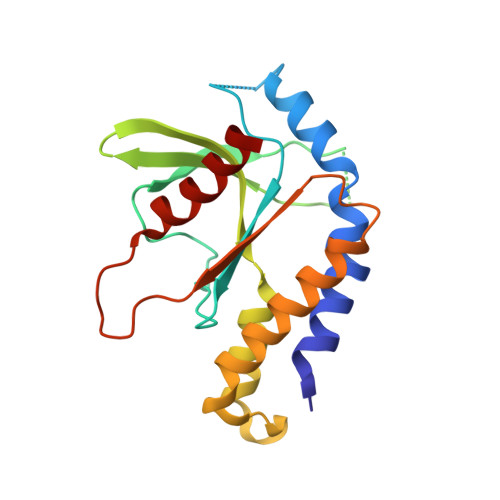Discovery and Optimization of a STING Agonist Platform for Application in Antibody Drug Conjugates.
Duvall, J.R., Thomas, J.D., Bukhalid, R.A., Catcott, K.C., Bentley, K.W., Collins, S.D., Eitas, T., Jones, B.D., Kelleher, E.W., Lancaster, K., Protopopova, M., Ray, S.S., Ter-Ovanesyan, E., Xu, L., Yang, L., Zurita, J., Damelin, M., Toader, D., Lowinger, T.B.(2023) J Med Chem 66: 10715-10733
- PubMed: 37486969
- DOI: https://doi.org/10.1021/acs.jmedchem.3c00907
- Primary Citation of Related Structures:
8STH, 8STI - PubMed Abstract:
While STING agonists have proven to be effective preclinically as anti-tumor agents, these promising results have yet to be translated in the clinic. A STING agonist antibody-drug conjugate (ADC) could overcome current limitations by improving tumor accessibility, allowing for systemic administration as well as tumor-localized activation of STING for greater anti-tumor activity and better tolerability. In line with this effort, a STING agonist ADC platform was identified through systematic optimization of the payload, linker, and scaffold based on multiple factors including potency and specificity in both in vitro and in vivo evaluations. The platform employs a potent non-cyclic dinucleotide STING agonist, a cleavable ester-based linker, and a hydrophilic PEG8-bisglucamine scaffold. A tumor-targeted ADC built with the resulting STING agonist platform induced robust and durable anti-tumor activity and demonstrated high stability and favorable pharmacokinetics in nonclinical species.
Organizational Affiliation:
Mersana Therapeutics, Inc., 840 Memorial Drive, Cambridge, Massachusetts 02139, United States.















